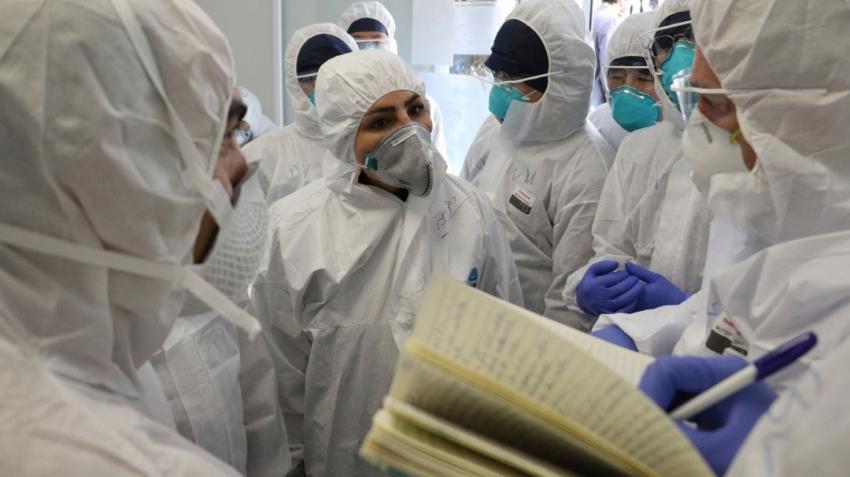The COVID-19 pandemic is not just a health issue. It is a profound shock to our societies and economies, and as mostly evident in the face of pandemics and crisis, women’s role are extremely critical in all care and response efforts. A 2019 Analysis carried out in 104 Countries by the WHO on Gender Equality in the Health Workforce found that Women form 70% of workers in the health and social sector.
As frontline responders, health professionals, community volunteers, transport and logistics managers, scientists and more, women are making critical contributions to address the current COVID-19 pandemic every day. A report by the Shanghai Women’s Federation states that more than 90 percent of the nurses and 50 percent of the doctors combating the epidemic are women, and in Hubei, the province at the center of the outbreak, there are an estimated 100,000 women working as frontline medical staff.
Likewise, the majority of caregivers, at home and in our communities, are also women. A report by Family Caregiver Action Network stated that approximately 66% of family caregivers are women, and according to the Family Caregiver Alliance, the percentage of family or informal caregivers who are women range from 53 to 68 percent.
This leaves them at an increased risk of infection and loss of livelihood, not to mention less access to sexual and reproductive health and rise in domestic violence during crisis.
In addition to caregiving responsibilities at home and in the communities, women still comprise the majority of health and social care workers. According to the U.S. Census Bureau, women in the U.S. hold 76% of health-care jobs, and in nursing, where workers are on the front lines of patient interactions, women make up more than 85% of the workforce, and are on the front lines of the fight against COVID-19.
Hence, this article looks at the many contributions of women in the frontline of combating the COVID-19 epidemic.
One of the measures put in place worldwide to stop or reduce the spread of the virus is massive school closures. This have particularly affected women because they still bear much of the responsibility for childcare, and home tutoring of their kids. Nearly 300 million students globally are currently missing class due to virus-led school closures, according to the United Nations Educational, Scientific and Cultural Organization (UNESCO).
The mass shutdown of childcare centers and schools across 15 countries, as well as localized closures in a further 14 countries, has left many working parents with little choice but to take time off, or to try to work from home while caring for their children.
As The New York Times reports, the closing of schools’ hits women particularly hard because much of the responsibility for childcare still falls on them.
Those who are poor, working in service jobs that cannot be done from home, and those without paid leave are especially vulnerable. Another unintended consequence of school closure is strain on health systems, according to UNESCO, with many medical professionals struggling to find childcare.
Women already do three-times as much unpaid care work than men – and caring for relatives with the virus adds to the burden.
Research from China suggests that while COVID-19 is infecting men and women in about equal numbers, women appear less likely to die from the virus than men. A study of some 44,600 people with COVID-19 from the Chinese Center for Disease Control showed the death rate among men was 2.8%, compared with 1.7% for women. Scientists say there could be a number of reasons for this difference, including biological and lifestyle factors. For example, Chinese men are much more likely than women to smoke, which harms the immune system. Also, women tend to produce stronger immune responses against infections than men.
However, in other, perhaps less obvious ways, the virus appears to disproportionately affect women. As the fight against COVID-19 continues, an increasing number of women around the world are in the front lines. Many of them will be expected to work longer hours, while juggling domestic responsibilities such as childcare.
Women and girls already do most of the world’s unpaid care work and are more likely to do so during this global pandemic.
According to the International Labour Organization (ILO), globally, women perform 76.2% of total hours of unpaid care work, more than three-times as much as men. In Asia and the Pacific, that figure rises to 80%.
As health systems become stretched, many people with COVID-19 will need to be cared for at home, adding to women’s overall burden, as well as putting them at greater risk of becoming infected.
As we all strive to stay safe during this global pandemic, we laud those women on the frontline of caregiving this period.
Watch this space as we bring you more inspiring stories of the World’s Heroines in the fore front of the COVID-19 battle.
Sheba Nyam





Comments are closed.